The story of the UK’s ‘Windrush Generation’ started with hope but ultimately led to injustices that are still being experienced today. It describes individuals and families who came to the UK between 1948 and 1971 from Caribbean countries and refers to the ship MV Empire Windrush which arrived at Tilbury Docks, Essex, on 22 June 1948. There were 492 passengers on that ship, and it’s estimated nearly half a million others have followed them.
Textile artist Sabine Kaner is a member of that Windrush Generation, and she uses her art to sift through her own experiences, as well as raise awareness of both the beauty and pain that rests within that diaspora. Sabine is in love with colour and a master at mixing and manipulating thrifted textiles (including threads) into gorgeous tapestry-like works.
Sabine’s story is especially timely in light of immigration challenges being experienced across the globe. (If you would like to learn more about the Windrush Generation, Sabine recommends the WindrushFoundation.com).
Immigrant Roots
Sabine: I grew up in London during the 1960s. Both my parents were immigrants. My mother came from Germany, and my father from Jamaica. Mixed marriages were frowned upon at that time, and there was a lot of racism and poverty. We lived in poor housing as one family sharing one room with inadequate facilities.
Most immigrants were desperate to better themselves. My parents both worked long hours, often having more than one job, so I saw very little of them. As a result, we had to grow up quickly and become independent. I also spent a lot of time reading, drawing and learning how to sew. These were all quiet activities that suited the environment in which we lived.
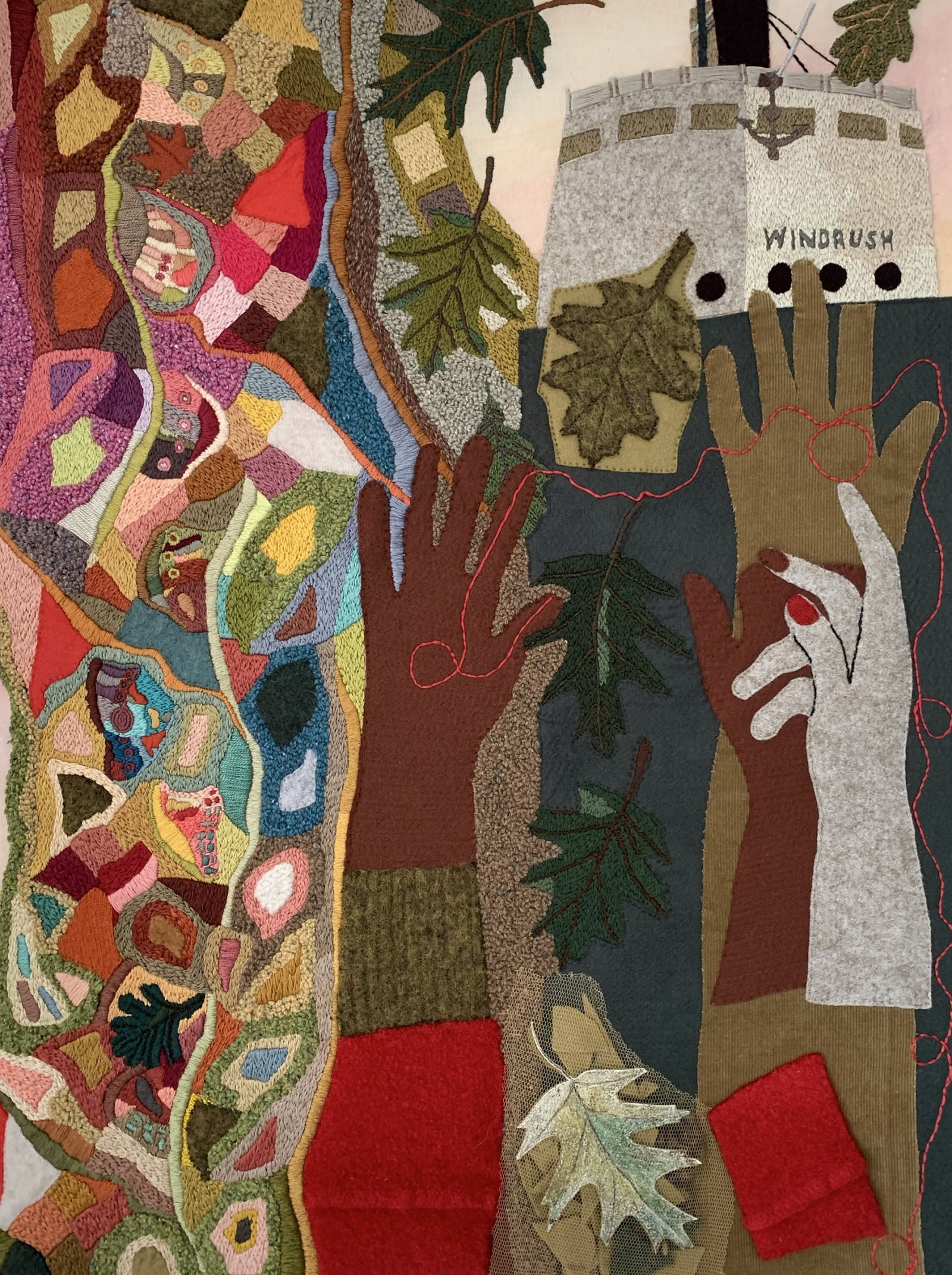
I struggled as a child to integrate into three cultures and was bullied a lot at school. My parents told me not to tell people my ethnicity. But that created a lot of confusion and identity issues. I eventually found myself fitting in with other immigrants of various nationalities, because we all shared similar experiences of prejudice, rejection and poverty.
The immigrant experience has had a profound effect on me and my art. It underpins all the work I create.
I was very fortunate to have an art teacher who took an interest in me and encouraged me to apply to art school. I was accepted to study an art foundation at Central Saint Martins in London, and I was the first person to go on to higher education in my family.
Saint Martins gave me many new experiences and opportunities. We visited lots of galleries. One exhibition called ‘Outsider Art’ at London’s Hayward Gallery completely changed my way of thinking about art. It taught me the power art could have in documenting an artist’s life. And it was a way to explore identity, emotions and experiences whilst avoiding traditional art materials, either by choice or necessity.
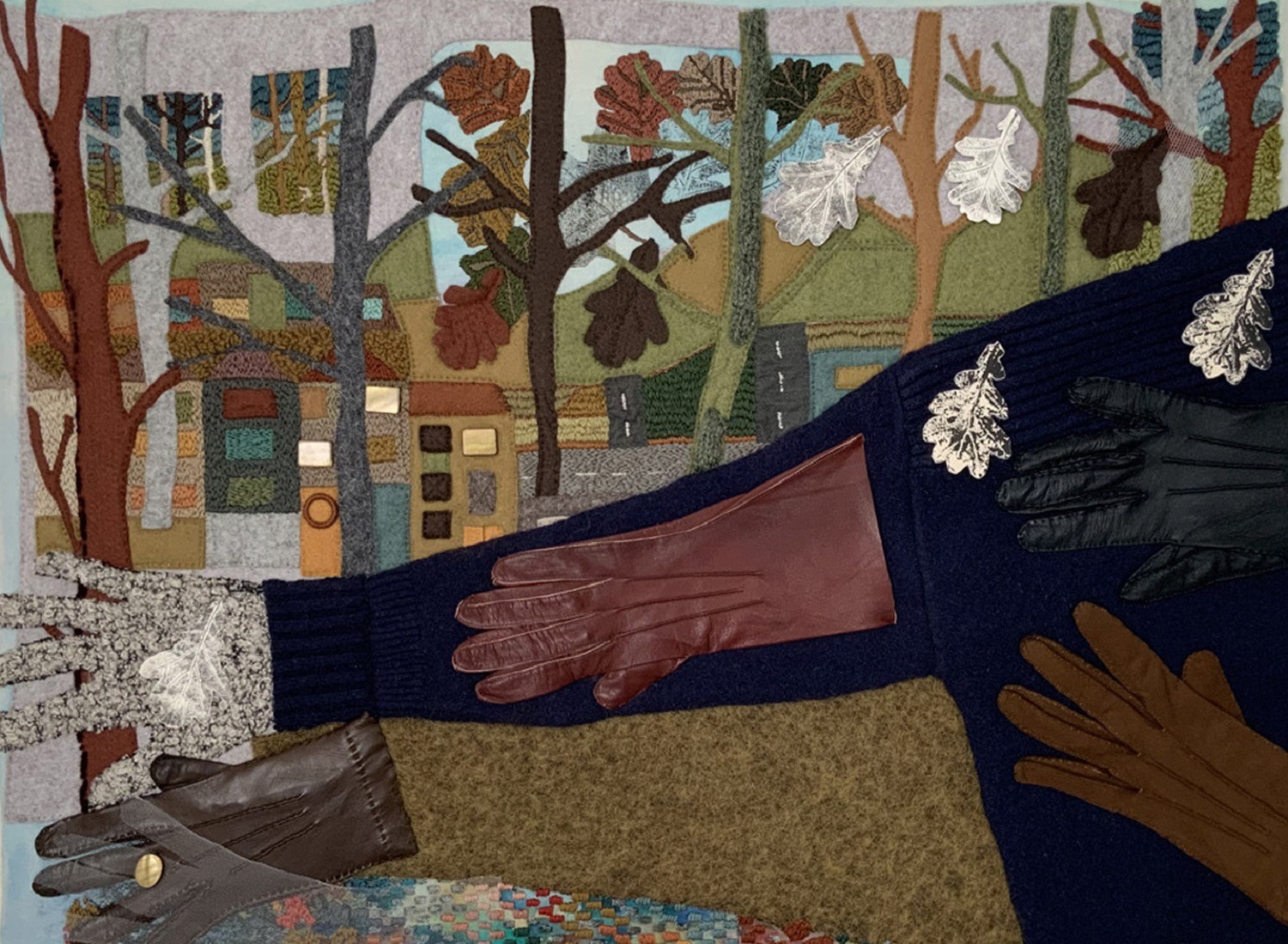
Discovering Textiles
After my foundation, I went to Manchester to study fine art printmaking. It was there I truly fell in love with textiles. I used to visit the textile department and gaze at the wonderful stitching and creations.
I started to incorporate fabric into my screen prints, but unfortunately in those days, it created a lot of disapproval. Subjects were kept very pure and mixing of materials was not encouraged.
When I first started creating textile pieces, I mostly used bits of fabrics and materials that had been donated to me or I had lying around. I had a lot of cotton pillowcases and sheets my mother and grandmother had given me which I used as canvases to sew on. And I cut up bits from discarded and worn out clothes and used whatever threads I already had.
My early pieces were very intense and experimental.
My present process still finds me reusing materials and recycling as much as possible, but I now buy natural unbleached calico on which to sew. I also use donated clothing from family and friends. I buy felt locally and visit charity shops to find discarded crochet and woollen pieces. My mother also left me a large array of embroidery threads which I have incorporated into my work over time.
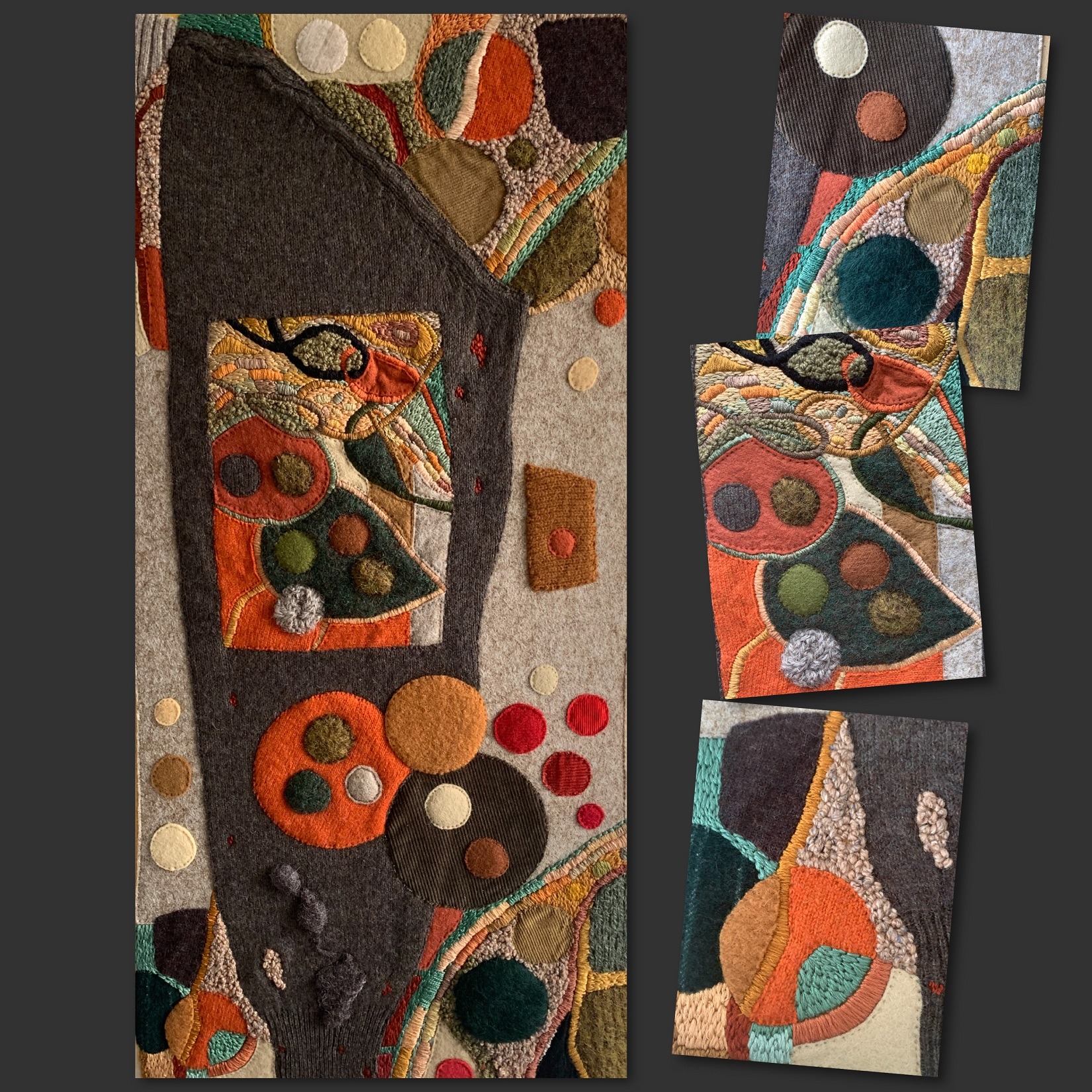
Colour and Symbolism
I use printing and paint as the underlying base of my work which I then gradually layer with fabrics and hand embroidery. I use colour intuitively and am aware that it is a powerful tool with the ability to communicate subliminal messages.
I try to create a sense of balance in my compositions with both my colours and shapes.
I use different colours such as a black background to bring other colours forward, so they stand out. Using black creates a dramatic backdrop. It’s a colour that conceals and doesn’t illuminate.
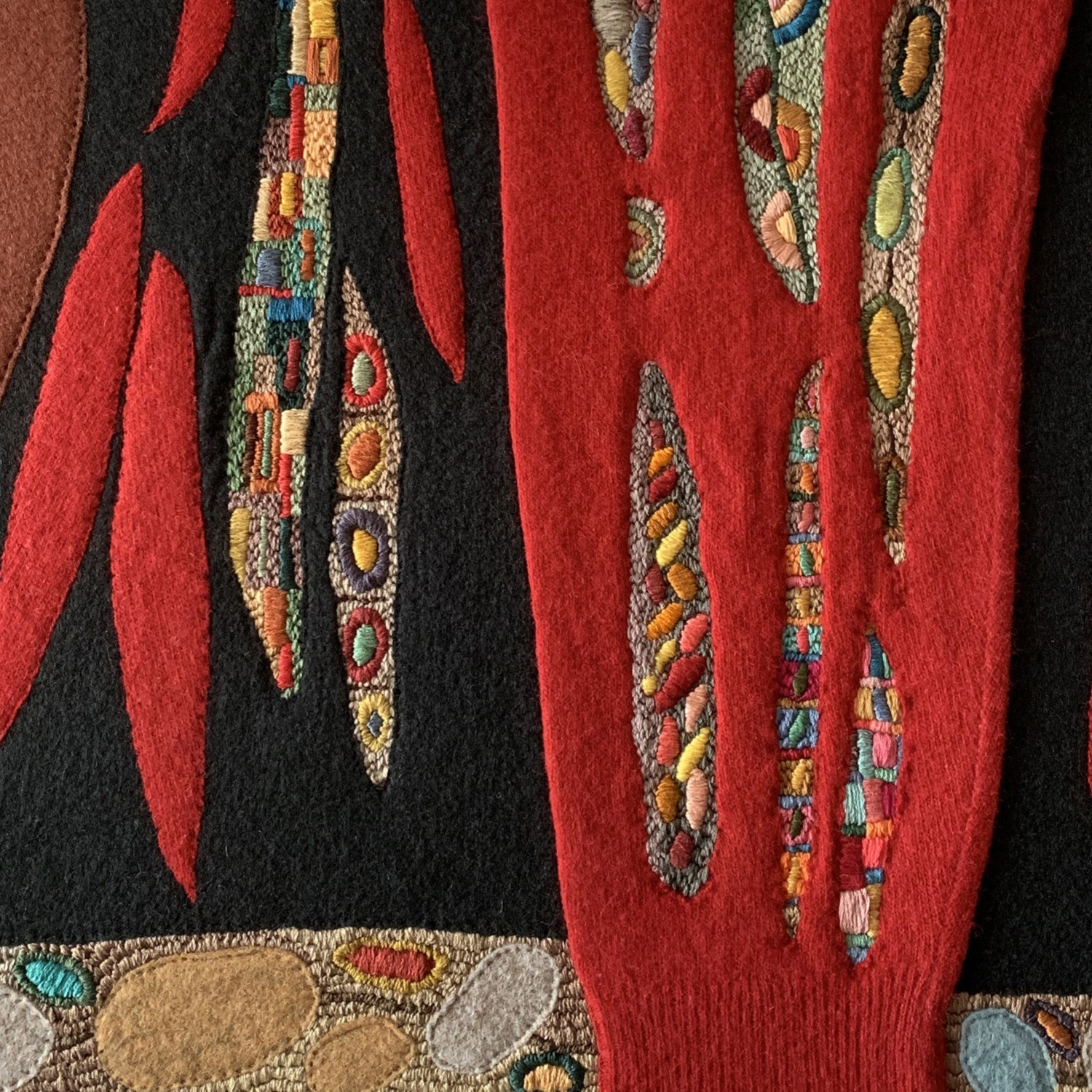
In Decorating the Cuts, I am talking about the difficult topic of mental health distress. I use red to emphasise ‘urgency’. The red is brought forward by placing it on a black background. In Colour of the Nations, I used brown which represents home and family to me. It is the colour of our roots and our history which I combined with the colours of the Jamaican flag.
I also use certain images to help convey messages. For example, hands are symbolic of expression. They can be as expressive as faces with their gestures. And they can give the viewer insight into the story behind a piece.
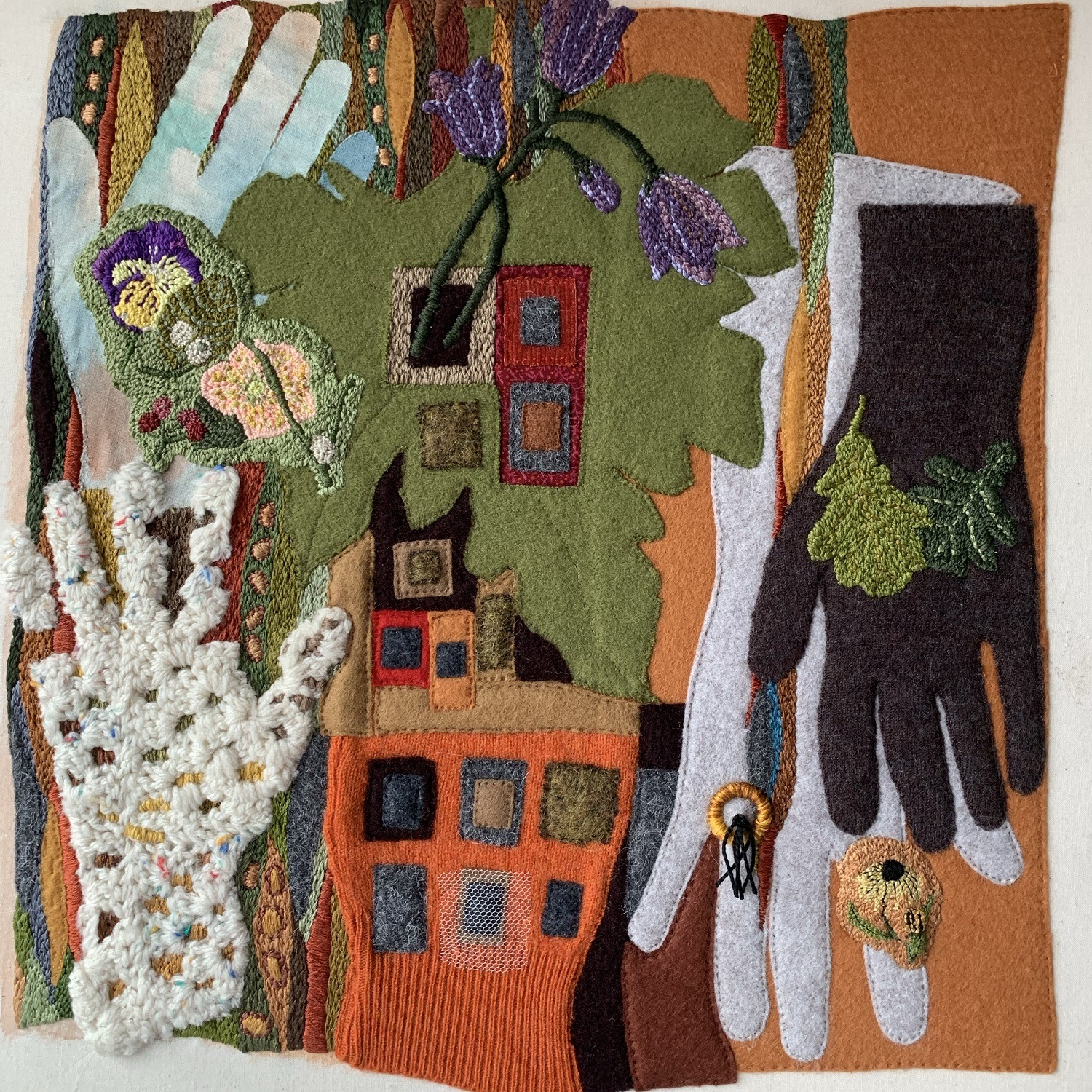
I have always worked with my hands as a maker and hand stitcher, so that is also an underlying narrative. In the Windrush piece, I used hands in different colours to represent my hybrid heritage and identity, which I linked together with red thread.
Sleeves are another frequent icon in my work, adhering to the saying ‘wearing your heart on your sleeve.’
The saying comes from William Shakespeare’s Othello which made a very deep impression on me when I first read it in school. I now use it as a way to express my experience as an official caregiver for my daughter for the past 25 years.
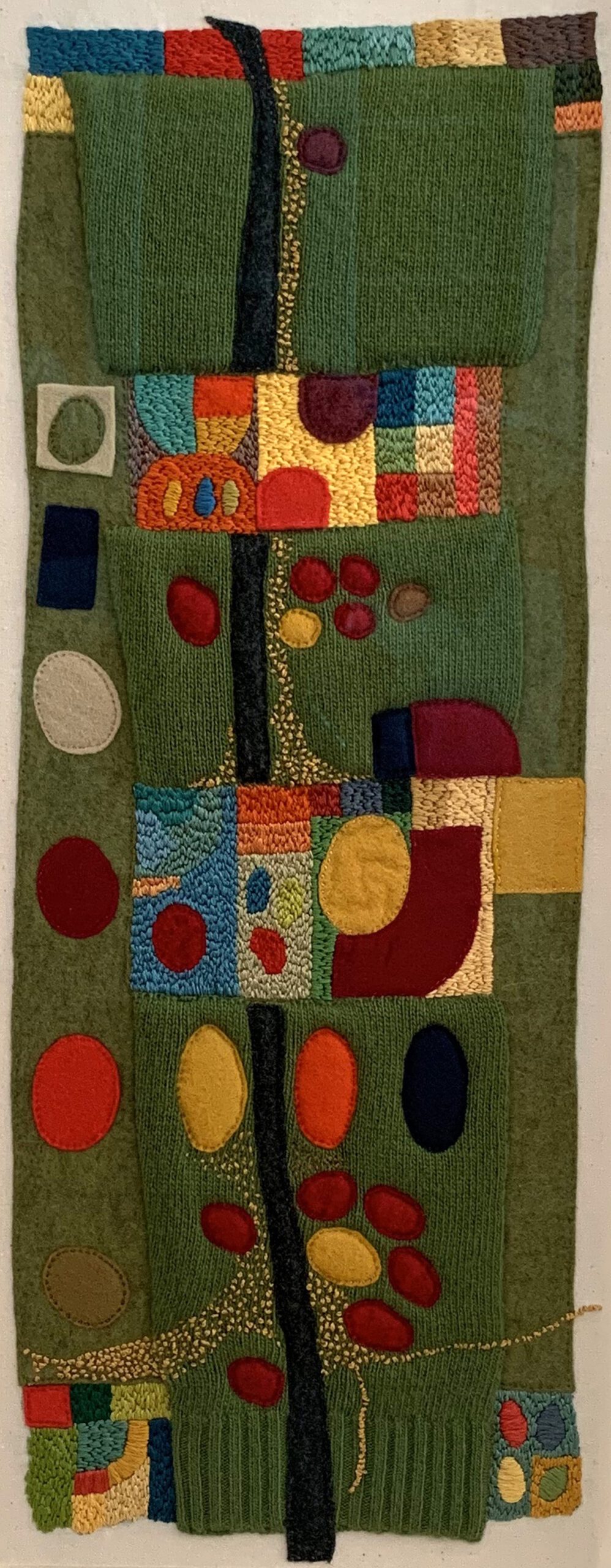
Emotions are always bubbling beneath the surface for which I have no words. Using sleeves is a symbolic way to release some of those feelings. I have created at least half a dozen compositions using sleeves, each expressing different aspects of my complex life journey.
Stitching from memory
Starting a piece of work requires a lot of organising of ideas. As there are so many interrelated threads (metaphorically speaking), I must tease out which one is the strongest. The advantages and disadvantages of my materials also often dictate some of the design.
I keep a large piece of plain paper on my desk on which I jot down ideas and small sketches. I also have a larger sketchbook I use to draw and experiment with colour. My drawings tend to be loose ideas and don’t usually just sit on one page. I have a separate book where I keep experimental stitches, print experiments and mark making on fabrics.
Every piece I create feels like a journey from the past to the present.
I find myself unpicking memories as I go along, working them through in my mind and then translating them into my compositions through the materials and the act of making. Political, social, economic and cultural identity are all part of the symbolic stories that present themselves in my compositions.
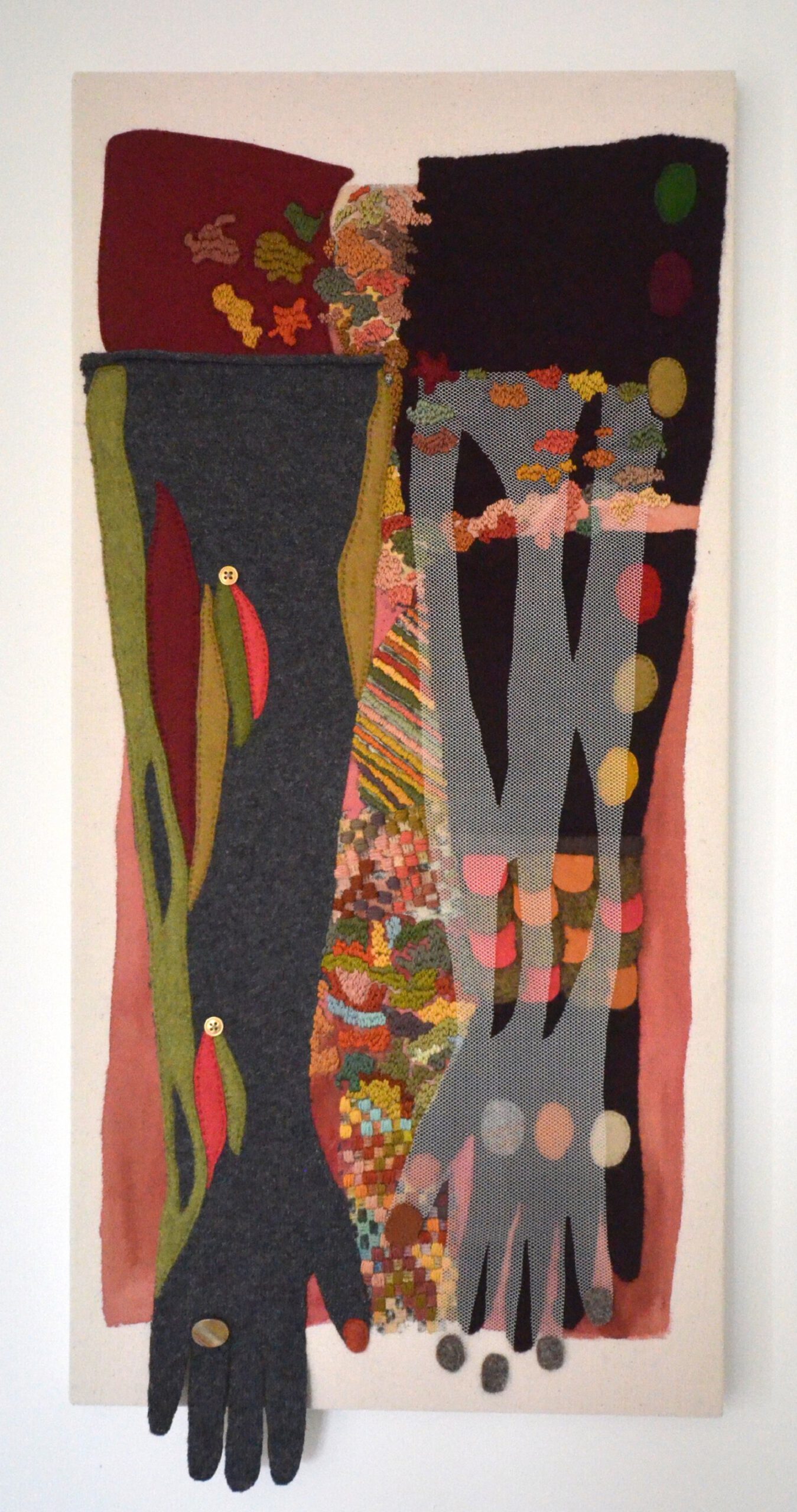
My work has also been influenced by many health challenges in my family, including my own, stemming from genetic disorders. I spent endless hours in treatment centres and hospitals with my disabled daughter. Textiles were portable and lent themselves to quiet environments, so I was able to explore the possibilities of fabric, textures and develop the art of hand stitching.
Repurposed materials
I work in a mixed-media way creating abstract images that are juxtaposed with contrasting patterns. I layer different processes and techniques either on top of each other or side by side. I then try to connect the separate materials with hand embroidery and stitch.
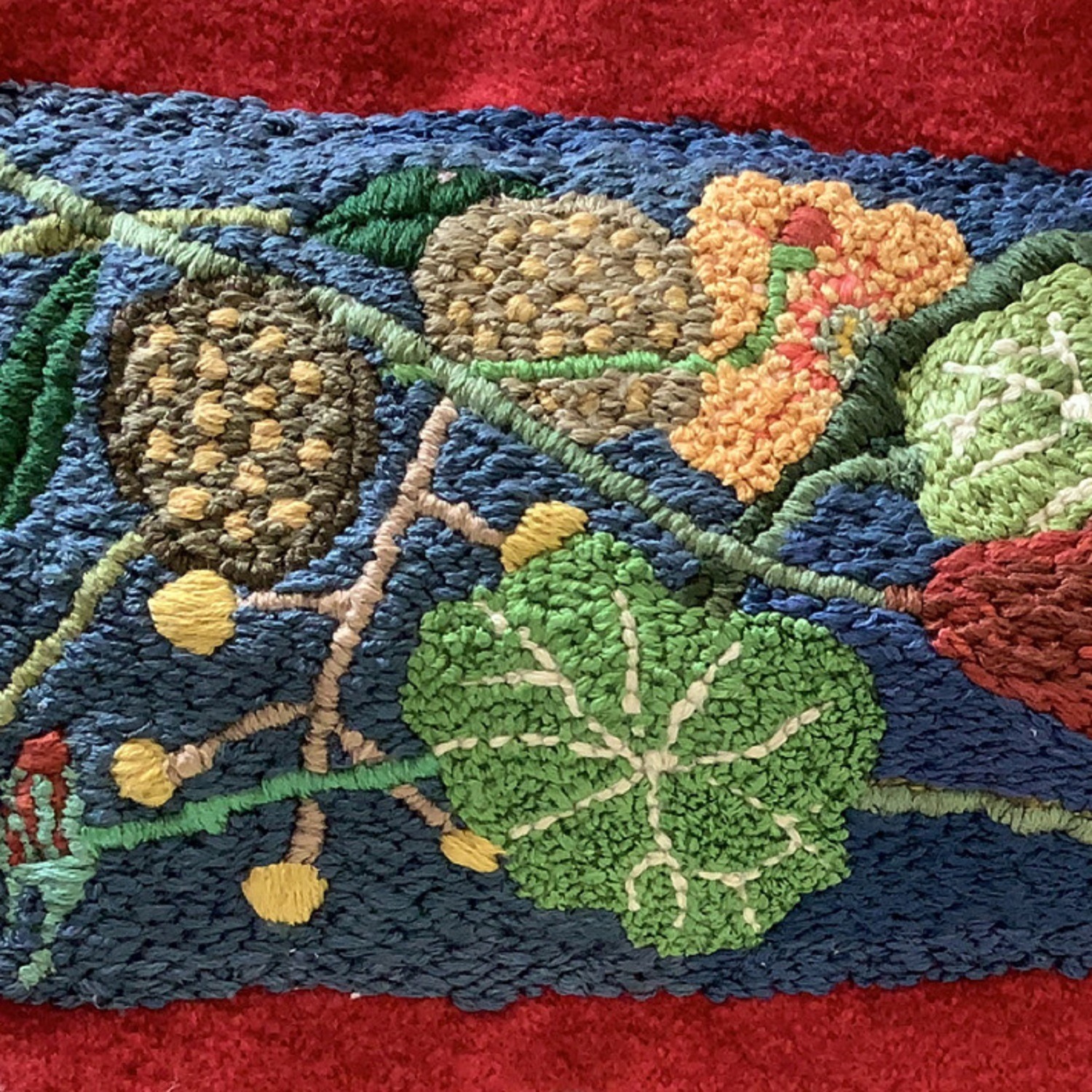
My embroidery mostly uses simple stitches which knit together to form a tapestry of colour. I save every piece of fabric – even tiny pieces – and have a big bag of scraps which I reuse. I also collect buttons, buckles and all the other bits attached to clothing.
When I print on fabric, I try to organise and make multiple prints at one time. I don’t always know how I will incorporate them into my work, but I usually find the textures I create inspire new ideas. My experience of printmaking, especially screen printing, has enabled me to understand how to overlay and use blocks of colour.
I have learnt so many different ways of using fabrics, paper, stitch and print – exploring their different qualities and how to combine them with stitching. I have also experimented with lots of combinations of colour and would like to continue to develop that.
I mostly use thrifted garments because I enjoy making use of the accidental marks, holes and shrinking that occurred over the life of those garments. They always provide more opportunities for embroidery stitches.
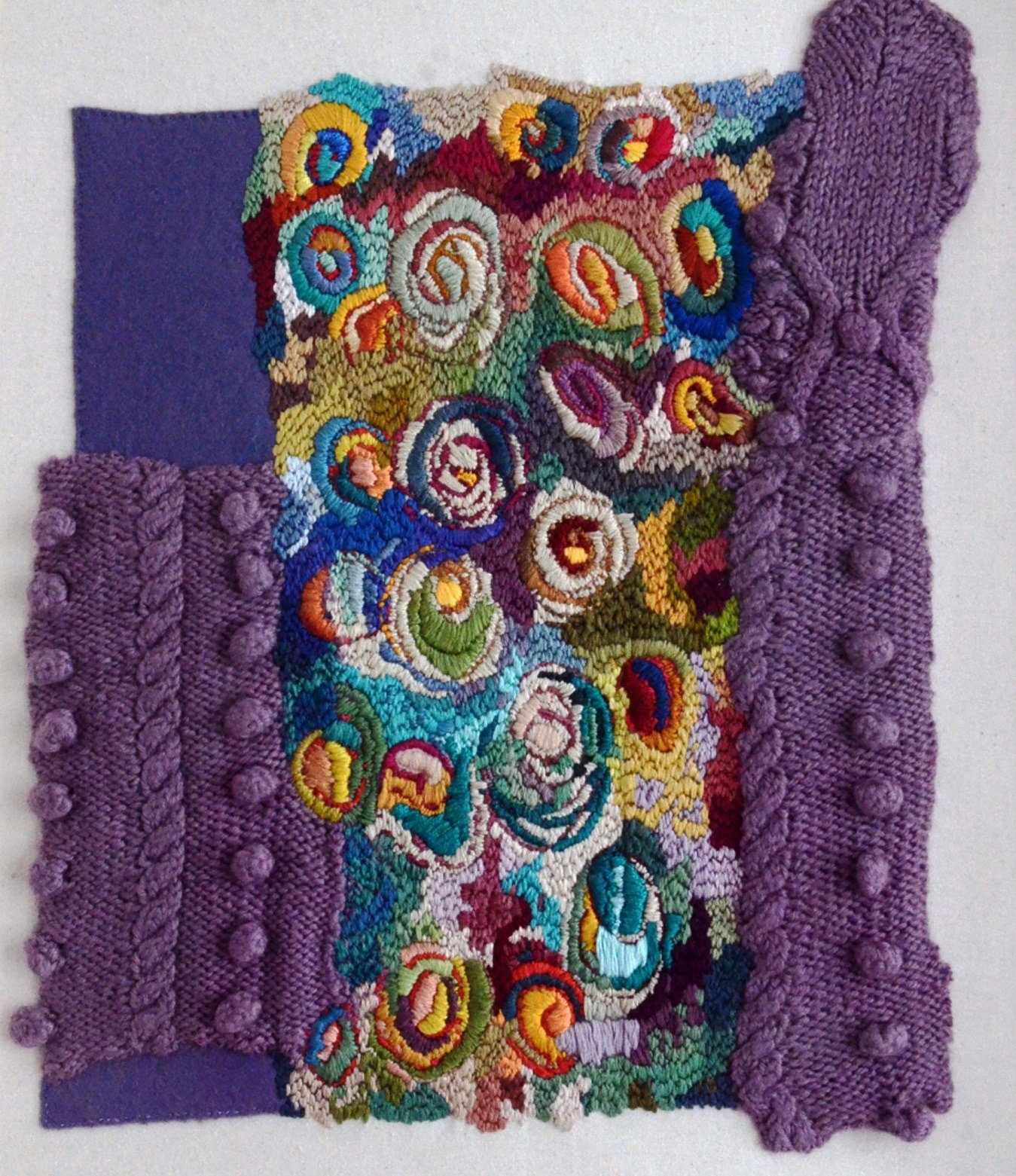
I have particularly fond memories of a piece I created called Blended Stitches that used a favourite hand-knitted jumper. Both my daughter and I wore that jumper until it started to fall apart. She wore it when she was very unwell and found it comforting, as it was big and baggy and very warm.
The piece is flanked by pieces of the jumper on both sides with a panel of embroidery stitches in the middle. I wanted the middle to be like an expressive painting. I find the piece joyous and comforting. And it’s a metaphor for warmth and security and for those who stood by me through many difficult years. I am very grateful.
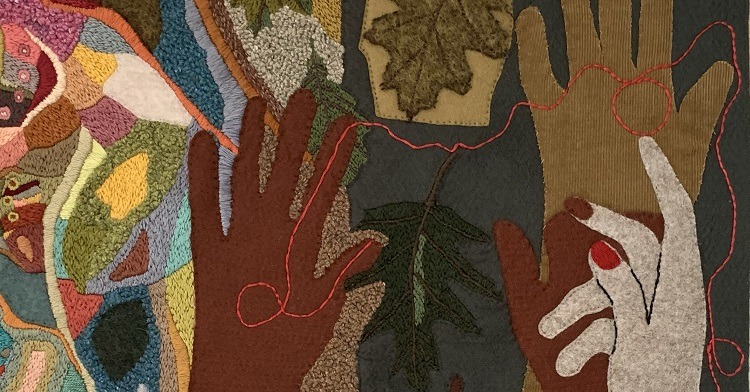

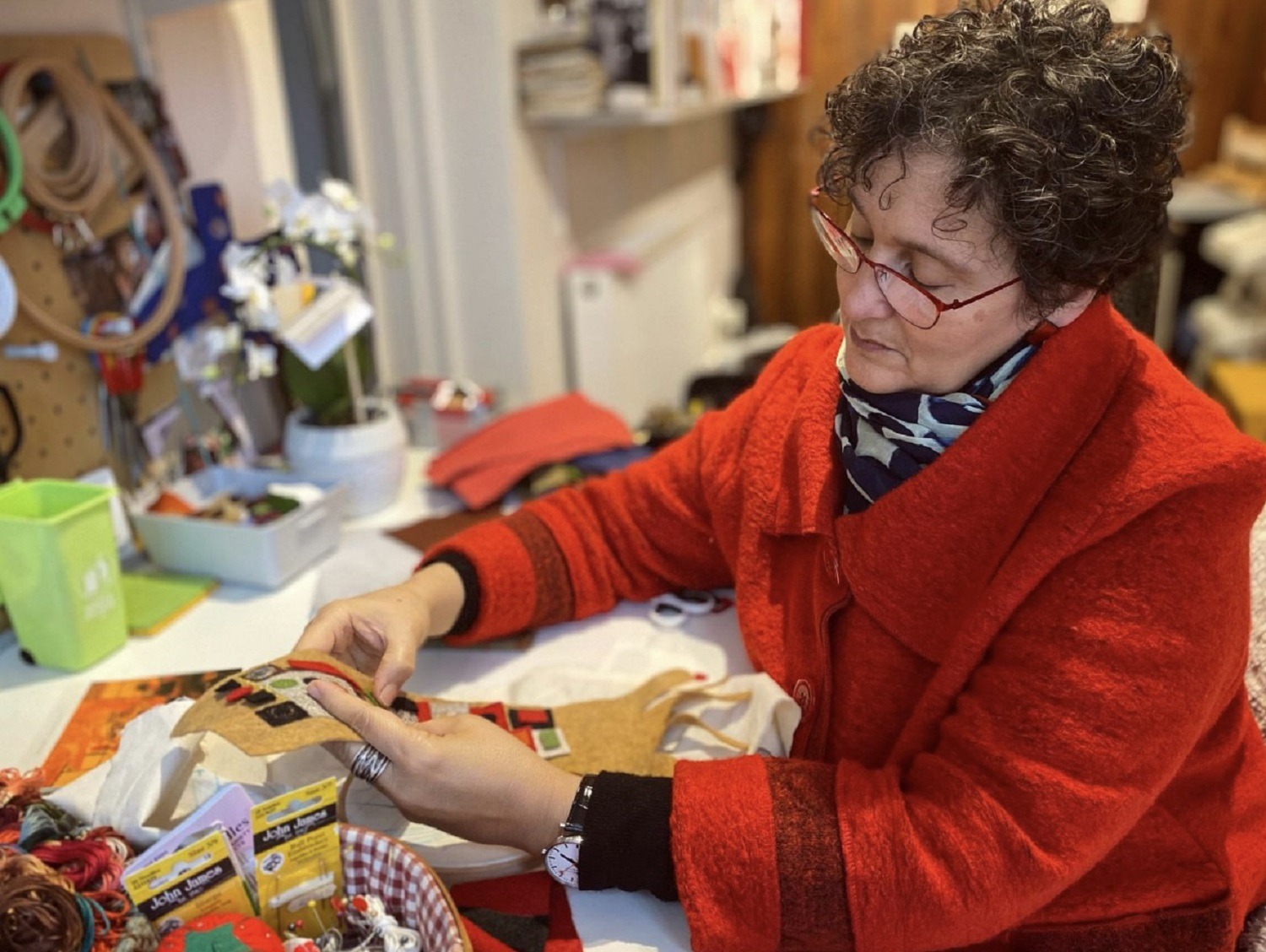
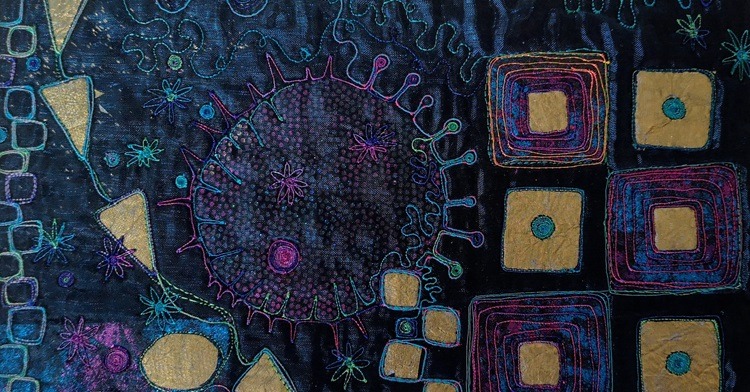
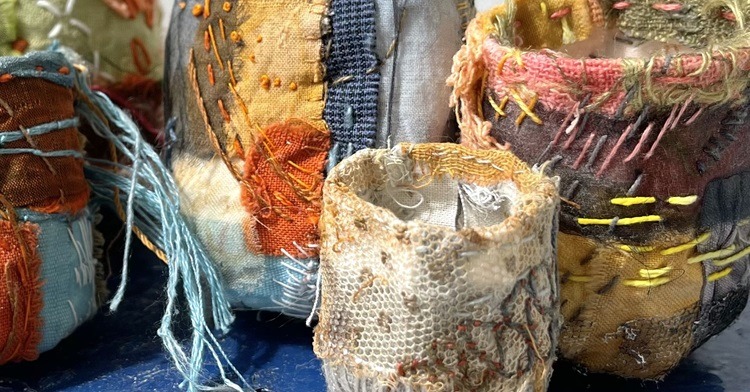
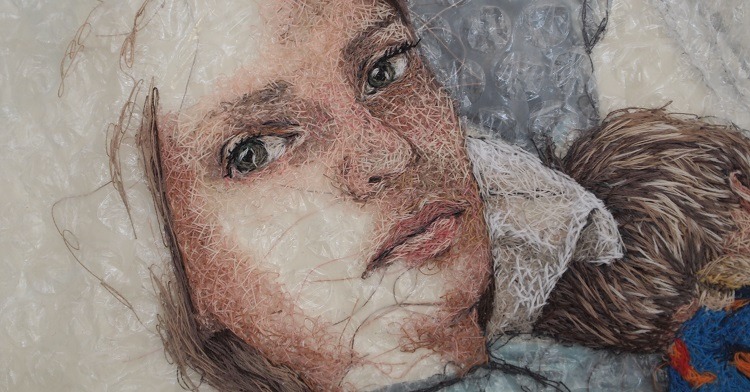
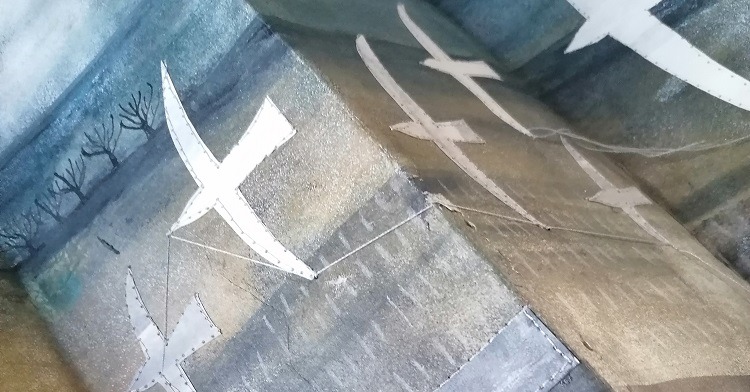
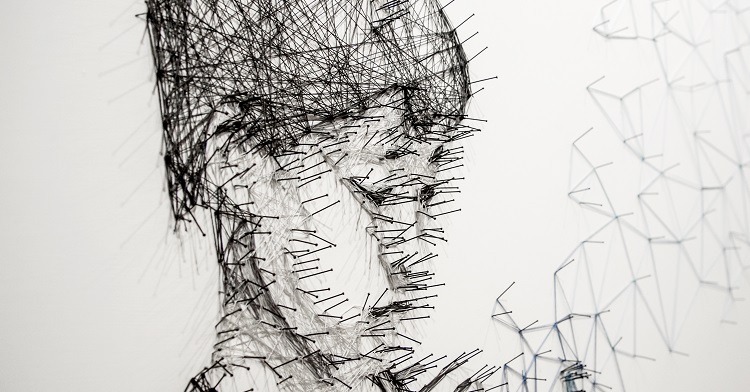
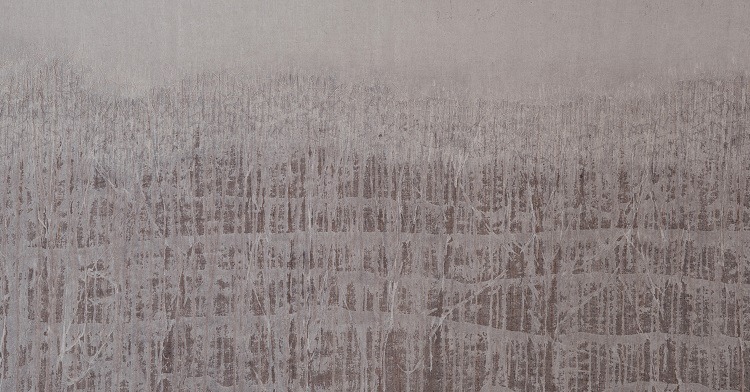

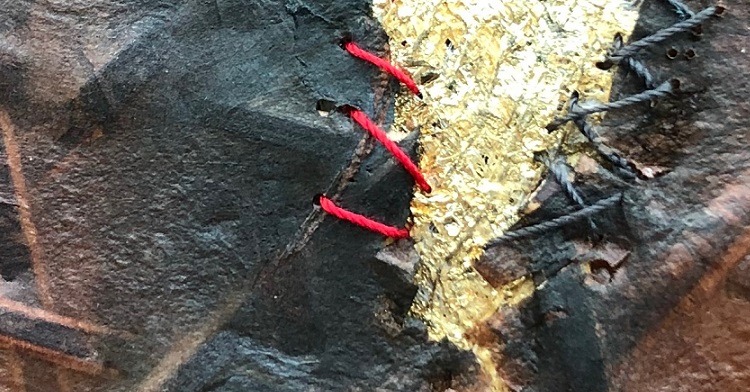
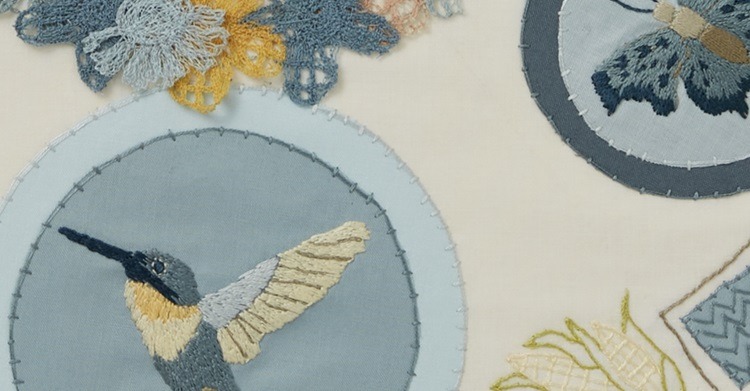
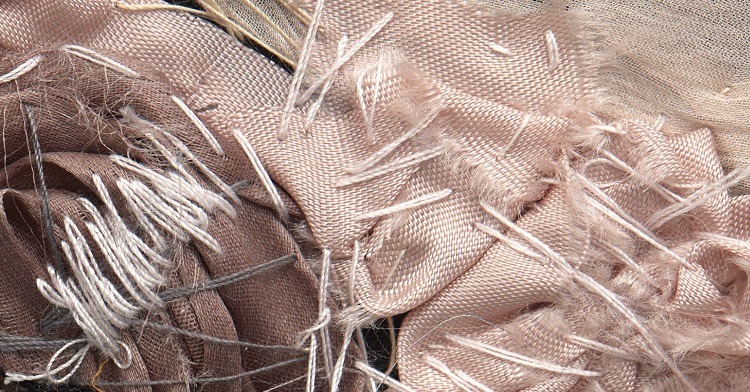
53 comments
Lyn Mills
What inspiring and beautiful work. I wish we could change your experiences of racism and bullying and tell you how very welcome you are in this country. It makes me ashamed that people from Windrush and afterwards have been treated so badly by the British. Thankfully not everyone is prejudiced and many people are kind and thoughtful. When I see your work it makes me think and makes me more determined to try and help combat racism wherever I come across it. Thank you and I look forward to doing your workshop x
Sabine kaner
Thank you Symone. There is no rush with textile work, take your time. I’m glad you enjoyed the workshop.
Wishing you happy stitching for the future!
Sabine
Sabine kaner
Thank you Rae for your very inspiring comment.
Sending all good wishes
Sabine
Sabine kaner
Thank you so much, I’m glad I have managed to inspire you.
sending all good wishes Sabine
Sabine kaner
Thank you for reading Ann,
Best wishes
Sabine
Sabine kaner
Thank you
Sabine
Sabine kaner
HI Lynn,
Your kind comments make me hopeful for the future. I think things are changing slowly.
I look forward to seeing your work. I hope you enjoy the workshop.
Thank you
Sabine x
Marlene Chadd LeBlanc
Love your work, just beautiful.
Ann Hankins
Very inspirational work, thank you for sharing your story.
Doreen Goonetilleke
What an inspiration. I have similar experiences coming from an Asian country as a grown up woman with two kids.I love your life experiences and I will try to do my own following you footsteps. Thank you.
Rae Fuller
Beautiful words and love your work! Your story touched my heart. Love and hugs, Rae.
Symone Barry
I am so inspired by your work and your story. You have given me hope that dark days can create beautiful and meaningful works that resonate.
I love your work Sabine and your workshop was wonderful. I’m still to create something but life gets in the way sometimes, doesn’t it!! Thank you Symone
joan Flynn
Beautiful work and an inspirational story. Thank you
Constance Waisanen
Your work is beautiful and inspiring. Thank you for sharing your story.
Constance Waisanen Astoria, Oregon. USA
Marijke Owen
Wonderful work, the colour are inspiring, and the content is so clear. Being an immigrant child myself, but not with the race disadvantage, it touched me deeply, thank you, Marijke Owen australia
Sabine kaner
Hi Marijke,
Thank you for reading my interview, and sharing your responses. Through my textile work I hope that I will be able to make a connectIon to other people.
Warm wishes
Sabine
Amanda
Sabine, Really enjoyed getting to know you, very inspiring reading about your work, motivation and inspiration. Blessings
Sandy
Live how you incorporate used sweaters in your work. Love your colour palette. Eager to see the workshop and how you use paint.
Linda J. Walsh-Lapinski
I love the use of the repurposed clothing pieces and the color! I love the color. Cant wait to start the next challenge journey with you, Sabine.
Marcela Palazzo
Maravillosas obras !! mucho color y energía, me encantan. Gracias por los consejos y el aliento a continuar experimentando. Muy inspiradora esta nota!
Sabine
Thank you Marcela, I’m glad that my advice was useful to you.
Warm wishes
Sabine
Tuesday Anketell
Your calm quiet strength and persistence shines through for me in this article. A true inspiration. The reminder to keep ideas and samples in sketchbooks is extremely useful.
Many thanks.
LEANORA MIMS
Sabine’s story and work is very beautiful. I am very inspired by her journey and her use of colors. I am looking forward to creating something with her workshop. Her work and colors are truly gorgeous.
Nilda Frenkiel
Me pareció una magnífica muestra de Arte Textil. Su manera de explicar en inicios sean ellos buenos o no tanto en donde cada error es una buena experiencia. Muchas Gracias, Sabine!
Sabine kaner
Thank you Nilda.
Warm wishes
Sabine
Sue Stoyanoff
This is such an inspiring story. I so appreciate your sharing of it. And I am quite taken with your art. Wonderful. Sue
Pamela J Johnson
Loved reading this. I had friends from Jamaica and Trinidad during student days in the early 1960s – most were working in hospitals where my dad worked and I had summer jobs. He valued them as colleagues but would have been horrified to learn I socialized and went out dancing with them. I’m ashamed to say I did not confront his racism then – but did in later years. Your work is wonderful. I hope I can see it for real sometime – I live in hope of getting back to annual visits to England. Color excites me too and I’ve done quite a bit of practical work with recycled woolens, creating pet blankets donated for sale to benefit the humane society. I have a large stash of wool as well as fabric and am really looking forward to the workshop.
Sabine kaner
Hi Pamela
Thank you for sharing something about your own experiences with me. I’m looking forward to chatting to members in the Stitch club. I hope the workshop inspires you.
Best wishes
Sabine
Andrea Woods
Thank you for sharing your story, wonderful colours and stitches Sabine. I’m really excited to follow your lead in the next workshop, all best wishes Andrea.
Sabine kaner
Thank you Andrea, I’m looking forward to chatting to members. I hope you find the workshop inspiring.
Best wishes
Sabine
Rochleigh Z Wholfe
I was very moved by your life experiences, work and insights about life. So genuine and inspiring. I also love working with textiles. The colors, textures, construction of fabric allows a great deal of diversity and creativity. Continued success, health and joy on your art journey!
Sabine kaner
Thank you for your comments, and your expressed love of working with textiles, that we both share!
Warm wishes
Sabine
Stephanie Torbert
Beautiful work. Inspirational and thought provoking. Thanks so much for sharing!
Sabine kaner
Thank you so much Stephanie
Felice sachs
I’m excited to see Sabine’s workshop. It feels like just the inspiration I can put to work immediately!
I’m in beginning project mode to honor a good friend‘s birthday. She has given me a collection of textiles, jewelry and photos relating to special women in her life from which I hope to create 2 mixed-media collage wall pieces.
Sabine kaner
Thank you, and I hope the workshop gives you lots of ideas for your projects.
Best wishes
Sabine
Jan Andrews
Sabine, your work is so full of life, just wonderful. Thank you for sharing your story.
Ann
Beautiful personal work and life affirming interview. Thank you.
Sabine kaner
Thank you Ann.
Penelope Walford
What beautiful inspiring work this is, with fantastic colours and textures. .It’s a real pleasure to look at things like this. I would love to see the furniture and fabric pieces. Great advice for aspiring textile artists. Thank you.
Sabine kaner
Thank you Jane for reading my story, and sharing your thoughts. What a lovely compliment!
Best wishes Sabine
Sabine kaner
Thank you so much for your comment. It’s lovely to connect with other Textile artists.
Best wishes Sabine
Maris Sharp
Fabulous colours
Ivonne
So inspiring
Margot
Fantastic read and work, thank you
Sabine Kaner
Thank you Margot.
Best wishes
Sabine
Olöf OLAFSDOTTIR
very interesting! Looking forward to the workshop
Sabine kaner
Thank you. I hope you enjoy the workshop and it inspires you. I’m looking forward to how the members respond, and seeing everyone’s work.
Best wishes
Sabine
Jane Cooper
Loved reading your story and seeing your magnificent art in stitchery.
Thank you. Jane
Sabine kaner
Hi Tuesday,
Such a heartwarming message. Thank you so much
Best wishes
Sabine
Sabine Kaner
Thank you Linda, I hope you enjoy the workshop.
Best wishes
Sabine.
Sabine kaner
Hi Sandy
Thank you for being so interested in my work and techniques. Sadly the workshop doesn’t show all the ways I might use paint, otherwise it would be too long. Maybe that’s for another workshop in the future!
I look forward to seeing your response and work in the q&a.
Best wishes
Sabine
Sabine kaner
Thank you Amanda for reading my story and your warm message.
Best wishes
Sabine